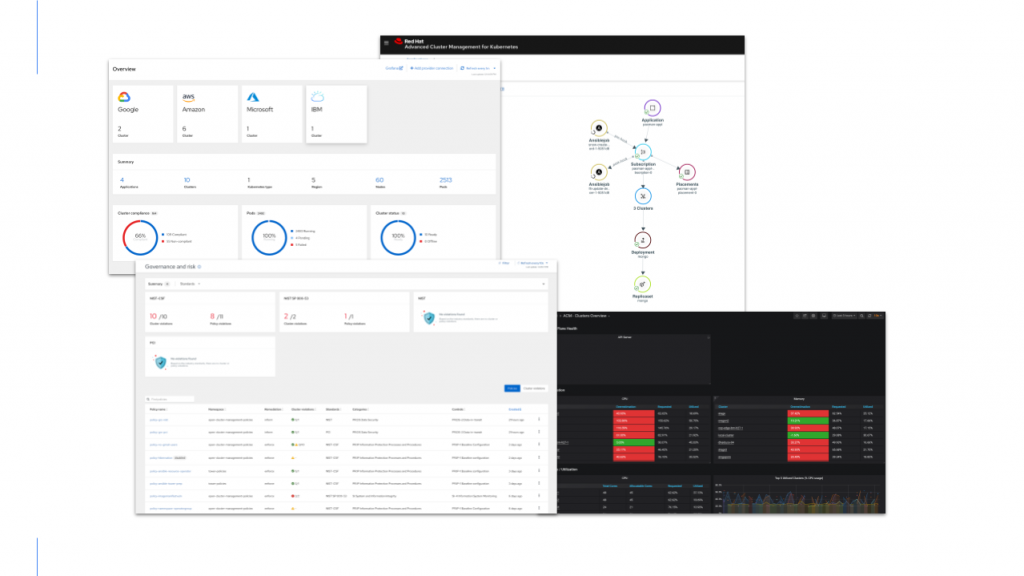Red Hat Simplifies Kubernetes Cluster Management
Red Hat has made generally available an update to Red Hat Advanced Cluster Management for Kubernetes that extends the reach of the Kubernetes management framework to include support for Azure Red Hat OpenShift, Red Hat OpenShift Dedicated and on-premises Red Hat OpenShift clusters running on OpenStack and IBM system Z.
In addition, Red Hat Advanced Cluster Management for Kubernetes now supports open source Open Policy Agent (OPA), which is being advanced under the auspices of the Cloud Native Computing Foundation (CNCF). That compliance-as-code capability is being augmented with the addition of policies that can be applied across a fleet of Kubernetes clusters to prevent, for example, configuration drift.
Finally, the latest update of Red Hat Advanced Cluster Management for Kubernetes has been integrated with Argo CD, an open source continuous delivery (CD) platform also being developed by the CNCF. The integration with Argo CD ensures that compliance and configuration policies are applied throughout a GitOps workflow process that automates application delivery in a Kubernetes environment.
Dave Lindquist, general manager and vice president of engineering for hybrid cloud management at Red Hat, says Red Hat Advanced Cluster Management is designed to not just enforce policies, but also provide observability into how application services are being deployed across a fleet of Kubernetes clusters.
As IT teams begin to deploy Kubernetes clusters at scale, the need to logically manage all those clusters is becoming more acute. Red Hat Advanced Cluster Management for Kubernetes, via a set of dashboards based on open source Grafana software, provides the visibility IT teams require to manage a hybrid cloud computing environment based on Kubernetes.
Most IT teams are still in the early stages of deploying Kubernetes across multiple platforms. However, as the number of Kubernetes clusters starts to multiply, it quickly becomes apparent there is now an opportunity to embrace hybrid cloud computing using a platform that surfaces a common set of application programming interfaces (APIs).
Those APIs also lay the foundation for GitOps workflows that automate application delivery by enabling Kubernetes clusters to automatically pull software artifacts from a repository versus relying on a CD platform to push artifacts out to a target platform. The expectation is that approach will advance the adoption of CD best practices that have been difficult to achieve and maintain in the absence of any cross-platform API standardization.
In the wake of the economic downturn brought on by the COVID-19 pandemic, the pressure on IT to contain costs has significantly increased. At the same time, however, IT teams are under more pressure than ever to accelerate digital business transformation initiatives by delivering more software, faster. GitOps workflows present an opportunity to achieve that goal while also employing Red Hat Advanced Cluster Management to streamline the management of multiple cloud computing environments.
Naturally, organizations now have a lot of choices when it comes to managing fleets of Kubernetes clusters. The challenge, however, is determining which of those management frameworks is best suited to enable GitOps workflows that will enable automation of containerized application deployments.





